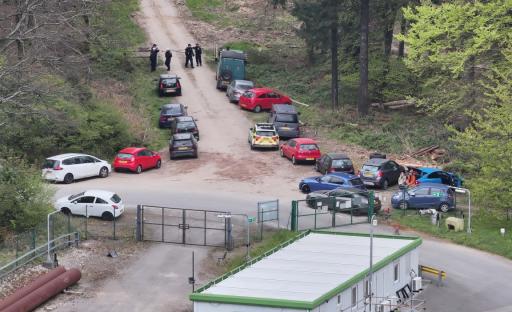Archeologists in Egypt have found a so-called “lost golden city” under the sand near Luxor, some 3,000 years after it was built for King Tutankhamun‘s grandfather.
Top Egyptologist Zahi Hawass revealed the startling discovery on Thursday, in what experts say is the most significant find since the tomb of King Tutankhamun was unearthed in 1922.
Read more: 2,000-year-old mummy found with gold tongue ‘amulet' in Egypt
It was not immediately clear how much actual gold was present in the city, but photos show a labyrinth of streets and buildings built with ancient brick.
In other words, it's not the actual El Dorado of Egypt, but more of a metaphorical “golden city” of renown.
A street in the ancient city of Aten is shown near Luxor in Egypt.
Zahi Hawass/FacebookThe city of Aten, which was built on the western bank of the Nile River, would have been a major industrial and administrative hub during Tut's rule. It was actually built during the reign of his grandfather, the mighty Amenhotep III. He ruled from 1391-1353 B.C.E. as one of Egypt's most powerful pharaohs, and later passed control to his son Akhenaton. Tut's successor, King Ay, is also thought to have used the city.
“Many foreign missions searched for this city and never found it,” Hawass said in a news release on Thursday. He added that his team began their excavations at the site in September 2020 while looking for Tut's mortuary temple. Such temples were often built near a deceased ruler's tomb and would be used to worship the pharaoh after death.
“Within weeks, to the team's great surprise, formations of mud bricks began to appear in all directions,” Hawass said. The diggers worked for months to reveal what is the largest buried city ever found in Egypt.
Read more: Egypt opens ancient mummy sarcophagus sealed 2,500 years ago
“What they unearthed was the site of a large city in a good condition of preservation, with almost complete walls, and with rooms filled with tools of daily life,” Hawass said.
Archeologists found various artifacts at the site, including rings, bits of coloured pottery, scarab amulets and bricks with Amenhotep III’s seal on them. They also found an unusual area fenced in by zigzag walls, a bakery and a workshop with moulds for casting scarab amulets.
Jewelry found in Aten is shown in this handout photo.
Zahi Hawass/FacebookBetsy Bryan, a professor of Egyptian art and archaeology at Johns Hopkins University, said the find was the “second most important archeological discovery since the tomb of Tutankhamun.”
She added that the city will offer researchers a glimpse of what life was like at the height of Ancient Egypt. It might also shed some light on the lives of Tut's parents, Akhenaten and Nefertiti, who tried to shift Egypt's polytheistic religion toward more specific worship of Aten, the sun god.
No mummy sarcophagi were immediately found at the site, but diggers did uncover human remains and two “unusual burials” of a cow or bull. There is also a cemetery and several “untouched tombs filled with treasures” (and perhaps more) at the site, although more work is needed to get into them.
The discovery is another major win for the Egyptian government, which is in the middle of a major push to keep major archeological finds at home, rather than allowing them to be shipped off to far-flung museums in nations like the United Kingdom.
The country is building a major museum as part of that push, which it hopes will bring in tourists from around the world.



